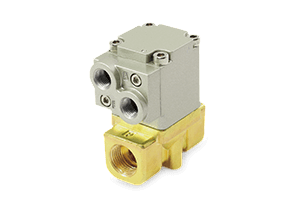2021-12-10
What are control valves and how they work?

What are control valves and how they work?
What is control valve?
Control valve is used to regulate the fluid flow by changing its size or course as directed by the signal from a controller. It helps in directly controlling the flow rate and thus helps in regulating the other vital processes quantities such as temperature, liquid level/flow, and pressure. It is also refereed as ‘final control element’ in automatic control terminology.
How control valves work?
The operation of the control valve is based on the balanced forces between pneumatic forces from the diaphragm against a mechanical force produced by the actuator spring. The control valve operates with a pneumatic signal 3 to 15psi. In case if the pressure is higher than 3 psi which is applied to the diaphragm then it will start overcoming the spring force and moves the diaphragm plate that will move the connected stem and the plug is operated. Control valves also act as a safety device in the process.
The features of control valves
- Fluid must be contained without external leakage
- It must have adequate capacity for the intended service
- It must be capable to withstand the corrosive and temperature influence of the process
- It must incorporate appropriate end connections so that it can mate with adjacent pipelines
- Actuator attachment is needed, it is the actuator thrust transmission to the rotary shaft or to the valve plug stem
The advantages of control valves
- Automatic Operation
- Easy Installation
- Reduced Wastage
- No Clogging
- Help to be Ecologically Friendly
The applications of control valves
Types of control valves
TAIWAN CHELIC CO., LTD.
TEL : 886-2-29041235
FAX : 886-2-29068203
No.21, Guifeng St., Taishan Dist., New Taipei City 243, Taiwan
